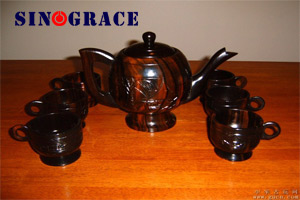Water-based paint knowledge base- water-based paints appear flocculated in the production process
Asked by water-based paint experts: water-based paints appear flocculated in the production process Problem: Our company produced a batch of waterborne paint last week. The formula remains unchanged. After the completion of production, the coating appears a mass flocculent,it is difficult to remove the filtration, the quality of waterborne coating is reduced. What is the cause? What method can purify? Answer: There are several reasons for the appearance of mass floccus in the production process of coating: 1.The most common is the dispersion of pigments and fillers, and flocculation clumps appear when film additives are added in the conditioning process.The flocculating clumps remain in the paint and are difficult to remove by filtration. 2.Coating production in the thickening process, thickener concentration is high, add too fast, cause local violent thickening, become granule:especially alkali swelling thickener cellulose ether thickener added directly easy to lead to the appearance of the mass. 3.Combination of cellulose ether thickeners and some whitening agents, such as hydroxyethyl cellulose (HEC) and whitening agents, will lead to flocculation clumps, leading to filtration difficulties. Solution: Film forming additives cause flocculation of pigments and fillers,Most occur in low PVC varnish systems(Particle Volume Concentration).Low PVC coating systems are often combined with low ion concentration of hydrophobic dispersant .Due to low PVC, high amount of polymer emulsion, relatively large amount of film forming agent,In the process of adding film forming agent, the solvent will peel the dispersant off the surface of the pigment and the filler to make the pigment and the filler flocculate.In order to avoid flocculation of the system, the film forming auxiliary agent can be preemulsified and then added. The pre-emulsifying composition of film-forming auxiliary can be referred to as the following proportions: film-forming auxiliary, about 5% cosolvent(ethylene glycol or propylene glycol, etc.), about 0.5% high HLB value wetting agent, and 50% ~ 80% water, a total of 100%, which will be added evenly after mixing . For the dispersion that has caused flocculation, add wetting agent appropriately and then disperse at high speed, open the flocculation, and then adjust the paint normally. General wetting agent accounts for about 0.2% of the total amount of paint. The flocculation caused by too fast and too thick thickening agent can be prevented by changing the adding method .For high molecular weight cellulose ether, alkali swelling (ASE) or hydrophobic modified alkali swelling (HASE) thickeners, can be made into a certain concentration of pre-gel, pre-gel form can be added at any stage.Cellulose ether thickening agent can also be added in advance in the process of dispersing color filler, so that the thickening agent is fully dissolved in the coating . Alkali swelling (ASE) and hydrophobic modified alkali swelling (HASE) thickeners can be d...
read more

 English
English français
français русский
русский español
español العربية
العربية








